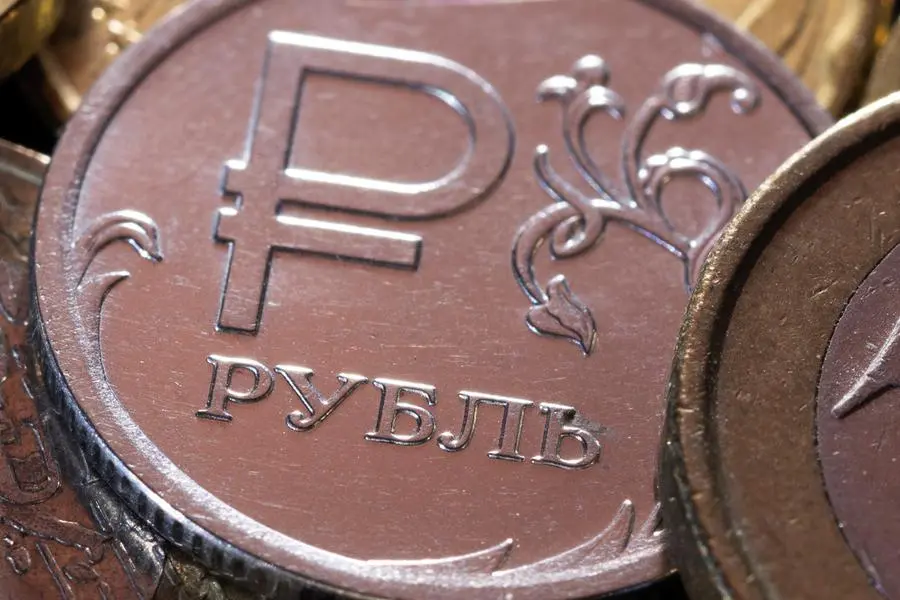PHOTO
The Russian rouble weakened sharply for the fourth session running on Tuesday, sliding past 63 to the dollar for the first time in almost eight weeks as energy markets reacted to the imposition of a price cap on Russian oil.
At 0707 GMT, the rouble was 1.1% weaker against the dollar at 63.01, and earlier hit 63.2875, its weakest since Oct. 14.
It had lost 0.1% to trade at 66.04 versus the euro , earlier clipping a five-month low, and had shed 0.7% against the yuan to 9.0, sliding past that threshold for the first time since mid-August.
The rouble is the world's best-performing currency this year, supported by capital controls and an initial collapse in imports as a result of Western sanctions on Russia over its actions in Ukraine, and scores of foreign companies pausing operations in the country.
Brent crude oil, a global benchmark for Russia's main export, was up 0.9% at $83.4 a barrel on the day, but hovered close to the lowest levels seen this year.
Oil rebounded on Tuesday after plunging by more than 3% in the previous session, as the implementation of sanctions on Russian sea-borne crude oil eased concerns about oversupply.
The Group of Seven set a top price of $60 a barrel on Russian crude, aiming to limit Moscow's ability to finance its military campaign in Ukraine, but Russia has said it will not abide by the measure even if it has to cut production.
The price cap is likely to lead to a small loss in the volume of Russian exports, Renaissance Capital analysts said, but the damage may not be felt as keenly elsewhere.
"We maintain our forecast for a gradual weakening of the rouble to 65 per dollar in the coming months with a move into the 70-75 range in 2023 against the backdrop of lower export revenues and a recovery in imports," RenCap said.
Russian stock indexes were lower.
The dollar-denominated RTS index was down 1.1% to 1,102.3 points. The rouble-based MOEX Russian index was 0.2% lower at 2,203.9 points. (Reporting by Alexander Marrow; Editing by Andrew Heavens)





















